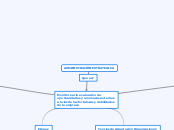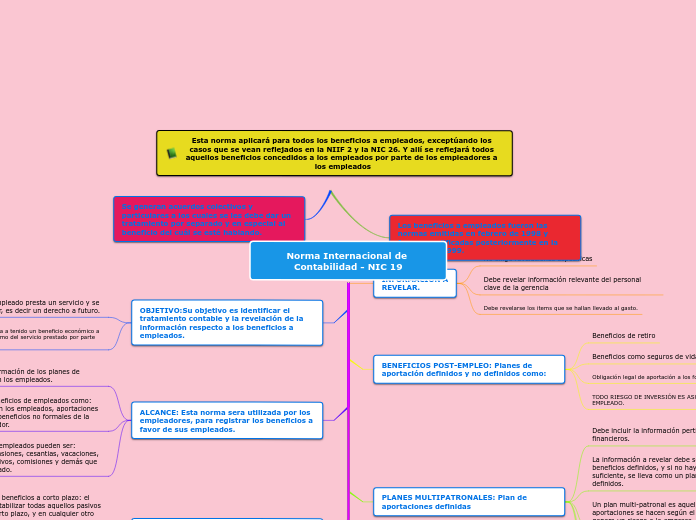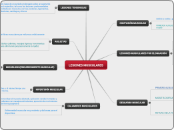Trastornos Hipertensivos Del Embarazo Archibold, Christy 8-958-1818
To name your story, you have to think about the overall message and what you want your audience to understand from the story. Also, make it relevant and easy to remember.
Hipertension Crónica + preeclampsia
agregada
Pruebas de laboratorio
Vigilar sangrado transvaginal
Evaluar por toxicidad de MgSO4
Se valora el estado fetal y se maneja de acuerdo a la situación
Si tiene más de 34 semanas se interrumpe el embarazo
Epigastralgia
Alteraciones visuales/auditivas
Náuseas/vomitos
Cefálea
Proteinuria previa alas 20 semanas
Es cuando hay una elevación de la presión por encima de valores que ya manejaba la madre.
Hipertensión Gestacional
The ending of a story is essential. We all know that if the ending is weak, what happened before loses its importance. So make it unpredictable, but fair. A resolved ending answers all the questions and ties up any loose threads from the plot.
Signos vitales cada hora
Vigilar estado fetal
Vigilar Signos vasoespasmodicos
Pacientes de 24 a 34 semanas se debe de utilizar
corticoides para maduración fetal
Dexametasona 6 mg IM cada 12 horas 4 dosis.
Betametasona 12 mg IM cada 24 horas dos
dosis
Restricción de crecimiento fetal
Muerte fetal y materna
Desprendimiento de Plancenta
Signos y Sintomas
This is the closure section of the story.
See examples of possible outcomes below:
- all problems have been solved
- it's clear how each one of your characters ends up
- your main character is transformed by the challenge
Edema, subida de peso repentino, visión borrpsa o doble.
Try answering these questions to come up with a closure:
- Have all the problems been solved?
- Is there a clear picture of what happens with each character in the story?
- Has the challenge transformed your main character?
- How do the characters feel in the end?
Aparece desde las 20 semanas de gestación o en el puerperio
This is the moment when the main character surpasses the last obstacle and finally faces their greatest challenge.
The climax usually follows one of these patterns:
- realization
- resolution
- choice
Type in your answer.
Valores >130/90
Preeclampsia-Eclampsia
The middle of the story is where you add layers of complications that will lead to the end. Reveal more about the character's journey. Did their personality go through changes? How did they overcome the challenges? And as you build up the story’s central conflict, make it more personal to that character. Also, from the middle act, you have to lead into the final act.
Manejo de la crisis hipertensiva
Prevenir o tratar convulsiones
Manejo de la hipovolemia
Tratamientos
There wouldn't be any tension and excitement in your story if there weren't any obstacles in your character's way.
El primer paso en el manejo adecuado de la pre-eclampsia requiere un diagnóstico correcto y en forma oportuna, luego de ello, el correcto manejo de la hipertensión y simultáneamente evitar que se presente la eclampsia.
A story is nothing more than a character overcoming a series of difficulties to reach the desired goal. Obstacles usually create suspense and conflict. In overcoming obstacles, there is growth: weak becomes strong; hatred turns into love; sadness into happiness; wrong into right; lies into truth; or evil becomes good.
See a few examples below:
- stopping a meteor
- finding a killer
- finding love
administrar la dosis de carga de 4 g por vía intravenosa de sulfato de magnesio diluidos en lactato ringer o solución salina normal en un lapso de 5-20 minutos, seguido por una dosis de mantenimiento de un (1) gramo por hora desde el diagnóstico hasta por 24 horas post parto
Se interrumpe el embarazo y se revisa el bienestar fetal
Riesgos
Fetales
Muerte Fetal Intrauterina
Maternos
síndrome de hellp, edema cerebral, desprendimiento de retina, edema pulmonar, insuficiencia renal aguda, hematoma/ruptura hepática, cid
Your character(s) need(s) motivation in order to solve the challenge(s).
Eclampsia
Secondary characters also might have motivs beacuse of which they may cross path with main character or which might trigger them to help the main character.
Problemas de visión, dolores de cabeza
Preeclampsia
Why does your character need to confront this challenge? What does he/she expect to accomplish by solving it?
See a few examples:
- will marry in 3 days
- can fix the mistakes of the past
Proteinuria, dolor de cabeza intensos, nauseas y vomitos.
La Eclampsia es la presencia de convulsiones asociadas a un trastorno hipertensivo del embarazo
Se presenta cuando la gestante tiene más de 20 semanas de gestación o en el puerperio
Each story has a main character and that character usually needs to solve a problem or challenge. The character's challenge is the one that creates tension throughout the story.
In most stories, there are 3 challenges. The number 3 is a mystical number symbolizing completeness. Try to come up with interesting challenges with which your character needs to struggle.
See a few examples below:
- turns into a werewolf at night
- is sent back in time
≥140/90mmHg
HTA Crónica
In the beginning of the story (or the exposition), you will need to introduce the setting and characters. You might also want to introduce the main conflict. This part of the story is important because it gives the reader necessary background information and maybe even a first insight into a character’s personality.
Cuidados de Enfermería
Balance Hidrico
Apoyo a la paciente y familiares
Evaluar reflejos Osteotendinosos
Tratamiento
Aspirina ( 80 mg/día) se recomienda para
prevención de preeclampsia solo en pacientes
con factores de riesgo
Calcio : Recomendado en pacientes con
ingesta inferior a 600 mg al día.
Signos y Síntomas
The setting (time & place) of a story can change throughout the plot.
Supresión de la orina
Dolores de cabeza
Sensory details include sight, sound, touch, smell, and taste. These details are important because they create depth in your setting.
See a few examples below:
- the smell of fresh bread
- the scent of freshly cut grass
- rain falling onto the windshield etc.
Cambios en la visión
Your story can take place wherever your imagination will take you to.
For example: in an elevator, in an enchanted forest, etc. Don't forget to give details of the environment each time the setting changes, otherwise, the story can be confusing. Also, mention the seasons as each of them has unique weather and events.
Dx antes de las 20 semanas de gestación persiste despues del puerperio (6semanas)
Characters are essential to a good story. Usually, the protagonist(s) is/are the most affected by the plot. Introduce a character by focusing on their actions, interests, and occupation, as the physical appearance doesn't make a difference in most cases.
Valores
Type in the name of your character.
160/110mmHg
Which traits best describe the character's personality? Choose more if necessary:
introvertedloyalkindindependentquick-thinkingadventuresomeidealisticsweet-naturedcalmrisk-takercreativewittystrictfussyweirdclumsyharshaggressivecarelessclingingcowardlycrueldeceitfulimpulsiveOther
140/90mmHg
Choose the type of your chacter:
Protagonist (main character)Antagonist (main character's opponent)Flat (stereotypical character)Round (his/ her personality develops throughout the story)Static (doesn't evolve as a person throughout the story)Dynamic (dramatical change in personality)Confidant (the main character trusts him/ her)Foil (contrasting character who enhances the personality of another character)Other










